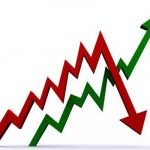When Shinzo Abe re-emerged in the Japanese political spotlight in 2012, he brought with him hope and a loosely formulated plan. After two-plus decades of deflation had reverberated through the Japanese economy, there were few ideas as to what may actually help to turn the low-growth tide that had continued to plague the economy through the technology and housing booms that sprang up all over the world. But Mr. Abe, after having resigned the Japanese PM post in 2007, went back on the campaign trail with his aggressive plan to attack economic deflation and the low-growth symptoms head-on with his ‘three arrows’ approach, which has since been dubbed, and even referred to by the man himself as ‘Abenomics.’
Mr. Abe’s three arrows are 1) fiscal stimulus 2) monetary easing and 3) structural reforms. He was able to institute two of these fairly quickly after winning over Japanese voters in the fall of 2012, but the third has remained an elusive. Fiscal stimulus and monetary easing have been addressed numerous times through multiple rounds of QE over the last three-and-a-half years, but addressing structural reform has been significantly more difficult. And perhaps more troubling, the Japanese economy continues to struggle to achieve that elusive 2% inflation target despite these numerous rounds of easing.
A major aspect of structural reforms for the Japanese economy have been increasing sales taxes, of which Japan still has some of the lowest in the world. In 2012 before Mr. Abe came back into power, the Diet of Japan (like Congress, Parliament, etc.) had passed a bill to increase the consumption tax to 8% in 2014 and 10% in 2015 with the goal of balancing the national budget while also discouraging domestic consumption. And the last time Japan hiked taxes, from 3% to 5% in 1997, the Japanese economy went into a deeper state of recession and deflation only worsened. When the scheduled tax hike went through in 2014, the Japanese economy again went into recession.












Leave A Comment